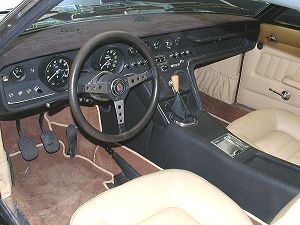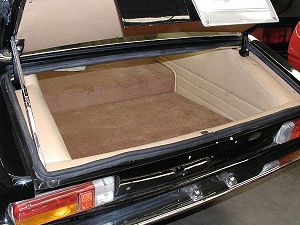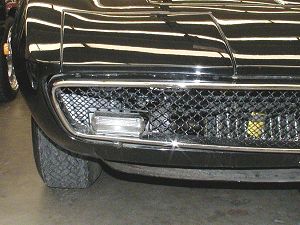 The Maserati Ghibli II (1992-1998)
The Maserati Ghibli II (1992-1998)
Overall Impression
Drive a Ghibli for the first time and you may well wonder if, given the number of rattles and squeaks from the interior, the engineering is similarly slipshod. Ignore them and you'll be treated to a car that got progressively better as it evolved. If you can run to a Ghibli Cup, it's worth serious investigation. With an excellent chassis and brakes and searing performance, it's better than you think.
The Final Evolution of the Biturbo
What sort of personal qualities are required to take the plunge on a used Maserati Ghibli? You'll need to be fairly well heeled, availed of a certain spirit of adventure, no little sense of humour and a passion for the marque. Thus armed, a used Ghibli needn't be the financial black hole many imagine and can certainly work out as a more cost effective and singular alternative to something like a Porsche 911. Many of the idiosyncrasies that stemmed from the Biturbo era were sorted in the Ghibli and later cars gained a respectable reputation for reliability.
History of the Ghibli
 The 'Biturbo era' can probably best be described as the nadir of Maserati's history. During this period in the eighties, Maserati manufactured over 38,000 small, angular coupes. Whilst this was more than the rest of their production history added together, this sales success did nothing for the illustrious marque. The Biturbos were badly built, skittish to drive and depreciated terribly. Realising that something needed to be done, Maserati retained the Spyder version and ditched the Biturbo coupe in favour of a new model, the Ghibli.This reprised a famous 1966 Maserati model name and while the underpinnings were derived from the Biturbo, the sheet metal was all new.
The 'Biturbo era' can probably best be described as the nadir of Maserati's history. During this period in the eighties, Maserati manufactured over 38,000 small, angular coupes. Whilst this was more than the rest of their production history added together, this sales success did nothing for the illustrious marque. The Biturbos were badly built, skittish to drive and depreciated terribly. Realising that something needed to be done, Maserati retained the Spyder version and ditched the Biturbo coupe in favour of a new model, the Ghibli.This reprised a famous 1966 Maserati model name and while the underpinnings were derived from the Biturbo, the sheet metal was all new.
After being sold for a year in Italy, the Ghibli 1a serie was first imported to the UK in 1993. It was powered by a 2.8-litre 24-valve V6 first seen in the 222 4v and 430 4v. 1994 saw the introduction of
Bosch ABS braking system and 16-inch "Merak style" alloy wheels,
this model nominated as the Ghibli M.Y.94.
 From 1995, the Ghibli GT was introduced with the Ranger rear axle, now mounted in the V6 Quattroporte saloon – adopted from Ferrari's 456 - and a Getrag six-speed gearbox was also fitted, with the option of an automatic box. 17-inch Mille Miglia wheels were standard.
From 1995, the Ghibli GT was introduced with the Ranger rear axle, now mounted in the V6 Quattroporte saloon – adopted from Ferrari's 456 - and a Getrag six-speed gearbox was also fitted, with the option of an automatic box. 17-inch Mille Miglia wheels were standard.
The simplest way to spot the different models is to inspect the headlights. The backing for the '1a serie' cars is silver whilst the Ghibli M.Y.94 and Ghibli GT models had sportier black housings. The earlier non-ABS cars had a large trident mounted on the radiator grille, whilst the later ABS cars had a smaller traditional trident within an oval surround. Very early examples had a GHIBLI motif on the right-hand side of the boot lid.
The GT model was sold alongside the very rare 'Ghibli Cup', of which only 26 right-hand drive models were made. The Ghibli Cup was powered by a 2.0-litre engine developing some 306bhp and was derived from the 'Ghibli Open Cup'.
The Ghibli Open Cup, available only in left-hand drive, was homologated to compete in the 1995 Ghibli Open Cup monomarque race series. For £48,000, one could buy the car and an additional £9,000 covered your entry into the races. The series was replicated in 1996 with cars undergoing a major revision, known as thye "EVO" pagkage. However, after only a couple of races, Fiat pulled the plug on the 1996 series on financial grounds.
A limited edition Ghibli Primatist, of which only 60 models were produced, with the 306bhp V6 was offered shortly afterwards. The good news was that Maserati produced a 330 bhp Ghibli Cup road car that has gone on to become very much the "one to have". With five spoke Speedline alloy wheels, Brembo brakes and a sportier simulated carbon fibre interior trim, the Cup was a moderate success with 26 being sold. Priced at £47,500, the Cup wasn't cheap but conditioned the market for the forthcoming 3200 GT.
Maserati Ghibli Cup Road Test

The Ghibli Cup's engine is quite an amazing bit of kit. Consider a premier league supercar of the nineties like a Bugatti EB 110 or Jaguar XJ220 and their turbocharged powerplants will crank out specific outputs of 157/155bhp per litre respectively. The Ghibli's 2.0-litre unit puts them both in the shade with a figure of 165bhp per litre. It's not an especially truculent unit either.
Most highly boosted small capacity engines are horrible at low revs, sounding as if they're perpetually on the brink of a stall. The Ghibli Cup is a little rough below 2,500 rpm but it still pulls cleanly with even less lag than the 2.8-litre engine. While it can't match the low end torque of the 2.8-litre engine, the 2.0-litre unit sings all the way up to the 7,000 rpm rev limiter. Think of it as losing torque low down but gaining power up top.
When 'on cam', this engine sounds absolutely exhilarating. Although it can be a handful to deploy 330bhp to the back wheels in the wet, given dry conditions, the Ghibli Cup will register a sprint to 60mph in just 5.6 secs. Considering the Brembo-developed brakes have 1,424kg to stop, they are generally beyond reproach.
Buying a Maserati Ghibli
Let's not gild the lily too much here. The Ghibli does have a few quirks. Both the 2.0-litre and 2.8-litre powerplants have proven respectably reliable if well looked after. Neglect the maintenance and things can get ugly. Maserati came up with a rather odd servicing arrangement for the Ghibli where every service up to 96,000 miles addresses different aspects of the car. If the car has missed the 48,000 service, for example, you'll need the cam chains changed, an engine out job for which your Maserati dealer will book thirty hours labour.
The engine management unit, alternator and the radiator can be prone to corrosion but the body is a little more immune to rust than earlier model Biturbos, which admittedly is not saying much. Ground clearance was an issue on early Ghibli models and Lambda sensors on the exhausts are often torn off over sleeping policemen as a result. Look for scuffed front spoilers too. Original electronic shock absorbers are prone to seizing and the electrics can be rather idiosyncratic.
Maserati Ghibli Typical Prices
It's not easy to give pat values on a specialist model like the Ghibli. You'll find each car is priced according to condition, mileage and service history rather than age. The earliest and tattiest cars can be found from £5,500 but these are often a false economy as they can eat up a good amount of maintenance funds. Best to look for a tidier late 2.8 GT or, if funds permit, the 2.0-litre Cup. This is the car most sought after and prices for a decent Cup start at around £12,500.
Maserati Ghibli Parts
A new clutch assembly is around £420 with front brake pads weighing in at £175 per pair and rears only slightly less. Given the stranglehold that Meridien and latterly Maranello Concessionaires has had on the market, a thriving trade in used spares has sprung up on various Maserati web rings. This is your best opportunity to poach inexpensive parts.

